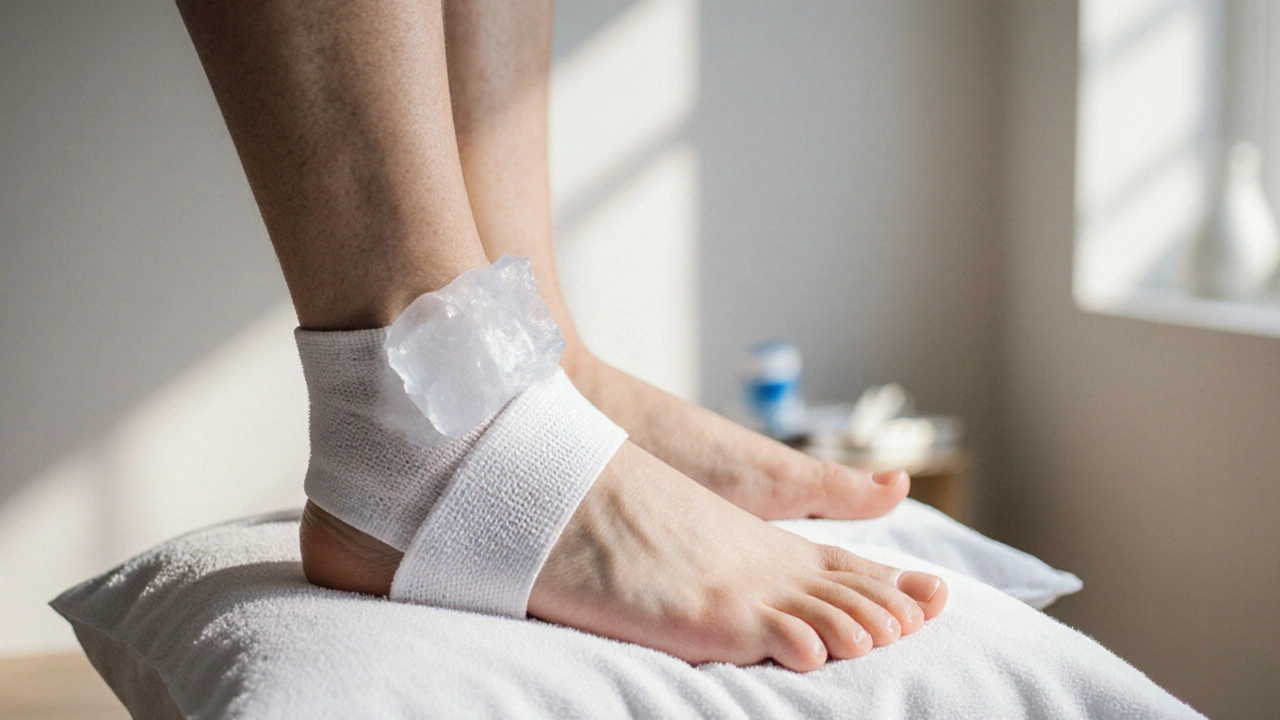RICE Method – Fast, Simple Relief for Common Injuries
When working with RICE method, a four‑step protocol of Rest, Ice, Compression, and Elevation used to treat acute musculoskeletal injuries. Also known as RICE protocol, it helps calm inflammation, limit swelling, and set the stage for tissue repair. The approach is rooted in basic physiology: by reducing blood flow and temperature, the body’s inflammatory cascade slows down, which means less pain and quicker healing.
One of the key companions to the inflamation, the body’s natural response that brings white blood cells and fluid to an injury site, is compression therapy, the application of external pressure to limit fluid buildup and support the injured tissue. Proper compression reduces swelling and supports faster tissue repair. Another partner, physiotherapy, targeted movement and exercise programs that restore strength and range of motion, often incorporates the RICE steps as a foundation before progressing to active rehab. Together, these entities create a cycle: RICE controls inflammation, compression holds the swelling down, and physiotherapy builds strength, which all together accelerate recovery. Many athletes swear by this loop because it tackles the problem at its source rather than just masking pain.
How to Apply Each Step for Real‑World Results
First, rest means avoiding weight‑bearing or stressful activities for the first 24‑48 hours. This isn’t about being lazy; it’s about giving damaged fibers a chance to stop tearing. Second, apply ice wrapped in a thin cloth for 15‑20 minutes every two hours—never direct on skin—to drop the tissue temperature by a few degrees, which curbs the inflammatory chemicals. Third, choose a compression bandage that’s snug but not cutting off circulation; you should feel gentle pressure, not numbness. Finally, elevate the injured limb above heart level whenever you’re seated or lying down; gravity helps drain excess fluid back toward the core. If you miss a step, the chain breaks: swelling can increase, pain may linger, and rehab takes longer.
Beyond the basics, consider a few tweaks. Adding a brief period of gentle range‑of‑motion exercises after the first 48 hours can prevent stiffness without upsetting the healing process. Some people find that alternating ice with a brief warm pack after 72 hours encourages blood flow back into the area, supporting the later stages of regeneration. Always listen to your body—if pain spikes or the area turns bright red, it may be time to seek professional advice. Remember, the RICE method isn’t a one‑size‑fits‑all prescription; it’s a flexible toolkit you can adapt based on injury severity, location, and personal tolerance.
In the list of articles below you’ll see how the RICE method intersects with everything from managing chronic gut inflammation after enteric infections to choosing the right generic medication for mild pain. Whether you’re a weekend warrior, a senior dealing with a sprain, or someone curious about how simple steps can complement prescription treatments, this collection gives you practical insight and deeper understanding of why these four steps matter. Dive in to see real‑world examples, safety tips, and expert advice that will help you put the RICE method into action the next time an injury knocks you down.
How to Reduce Swelling After an Injury and Speed Recovery

Learn fast, science‑backed ways to reduce swelling after an injury, from the RICE basics to nutrition tips, so you can recover quicker and get back to daily life.
- September 30 2025
- Tony Newman
- 9 Comments
